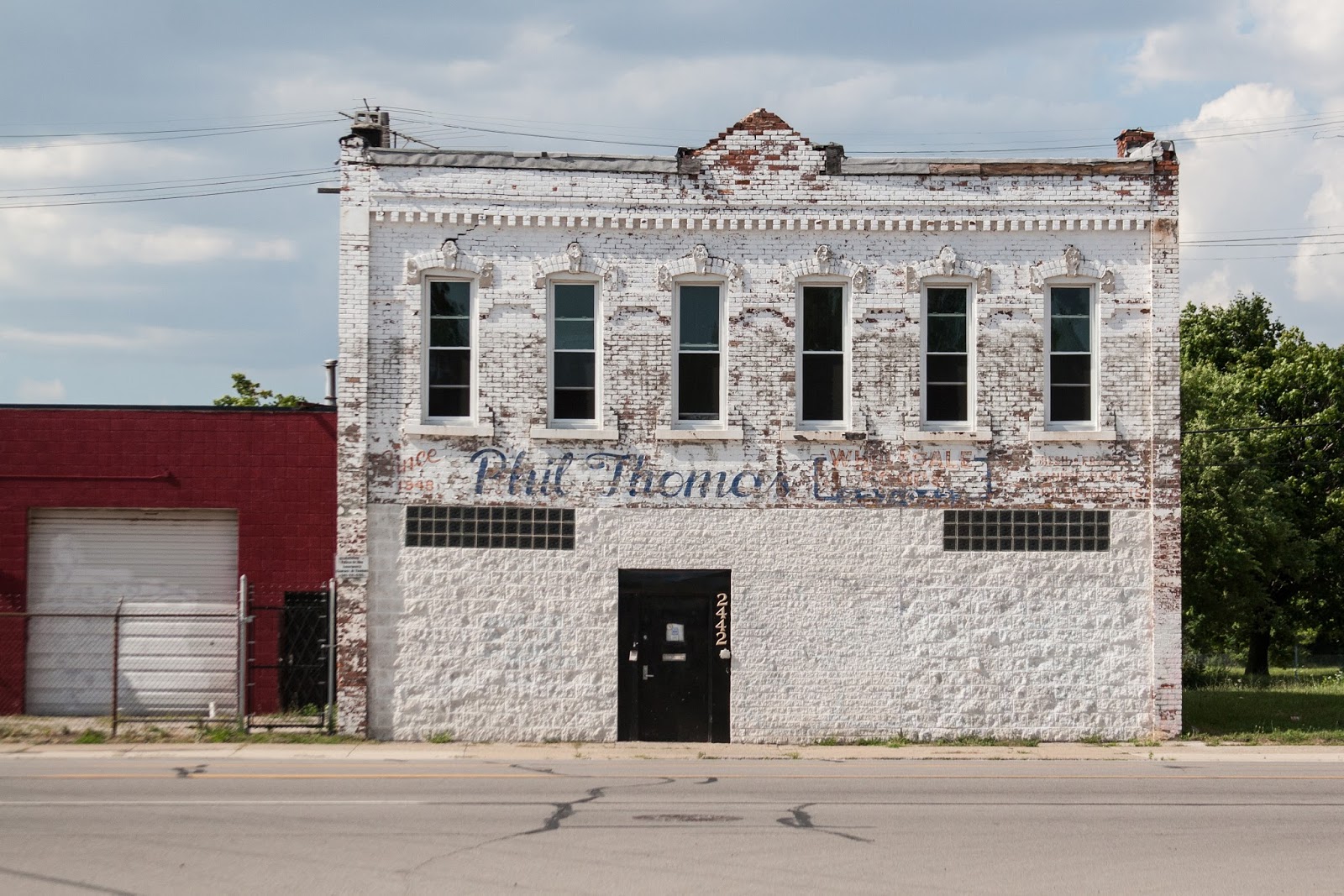Most people in the US and even abroad have read stories about the plight (and blight) of Detroit. A documentary that I've watched and even done a review on (Detropia) details the fall of one of the mightiest cities in the United States. A population drop from 1.8 million to 700,000 in a period of 50 years resulted in a completely-eroded Detroit tax base. Remaining residents defaulted, General Motors went bankrupt, then the city itself went bankrupt.
When I got to the city though, I was pleased to discover a community that's growing stronger. Abandoned buildings scattered the landscape, but many have been revitalized, turned into giant canvases for various art projects. Eclectic bars and restaurants line Michigan Avenue in the Corktown neighborhood of Detroit, and they're busy.
Detroit's importance didn't dawn on me until I rolled into town and investigated some important historical spots. One of the most important spots is the Ford Piquette Avenue plant, which I toured the next morning.
Back in the early days of the twentieth century, Henry Ford wasn't unique; at least, not yet. He tinkered around with designs and prototypes of a quadricycle as early as 1896. This was essentially technology he was basing from the also-fledgling motorcycle industry. But in 1903, he decided he wanted to build automobiles. In 1904, he opened the three-story brick factory on Piquette Avenue. This was a time when around 25 automakers had shops in the area, so he was up against some formidable competition.
The most remarkable thing about Piquette is that it's still standing, in almost 100% originality. I walked through the halls of the factory, where about 1,600 of Ford's earliest employees began building the legendary Model T.
 |
| A re-creation of Henry Ford's office as it would have looked in the early 1900s. The desk and chairs were made from scratch using reference photographs. |
In the back corner of the third floor, there is a small room. Framework for walls mark where the old walls of this room used to be, according to clues on the walls and ceiling of the building. This room is where Henry Ford and a team of up to 10 engineers came up with designs for the Model T, as well as engine and transmission prototypes.
 |
| A poor photo of the only surviving Model T prototype engine. Even here, you can see how simple the design is. |
Standing here was a special experience for me. In fact, I stood there for several minutes. I imagined what the world would be like if this place no longer existed. I was standing in the same spot where a group of individuals, over 100 years ago, changed the course of history. If Piquette didn't exist here, the path of automotive history could have gone in a completely different direction.
Luckily, when the building was up for demolition in 1998, a group of passionate individuals banded together to try and save it. In 1999 the building was purchased from 3M, who had long since abandoned operations there. In the past few years especially, the Piquette Avenue plant has seen major changes, as well as a huge influx of visitors.
 |
| An original-condition body for an Oldsmobile Curved Dash. This was essentially a lightly-modified sled, normally led by horse. The Curved Dash was the first car to be mass-produced, in 1901. |
The history of this city and the automotive industry itself is still felt in Detroit, and I think that's what makes it so special. Many of the individuals who used to live in the city now live in surrounding suburbs like Livonia, Novi, Northville, and Plymouth (where the Concours was held). But factories still operate all over the city and in surrounding towns like Dearborn, where the revamped Ford Rouge factory pumps out F150s for the American and Canadian markets.
Downtown Detroit is alive with activity. Historic buildings that were vacant for decades are being restored; slowly, but surely. Neighborhoods like the aforementioned Corktown are getting new residents and communities are being rebuilt. But the nation's motor capital is still far from what it used to be. What does the future hold for this city? We have to wait and see.
Stay tuned as I start adding pictures and write-ups to accompany events surrounding my visit to the Concours d'Elegance of America and its surrounding events.
Keep scrolling for more photos from my wandering through downtown Detroit.










































0 comments:
Post a Comment